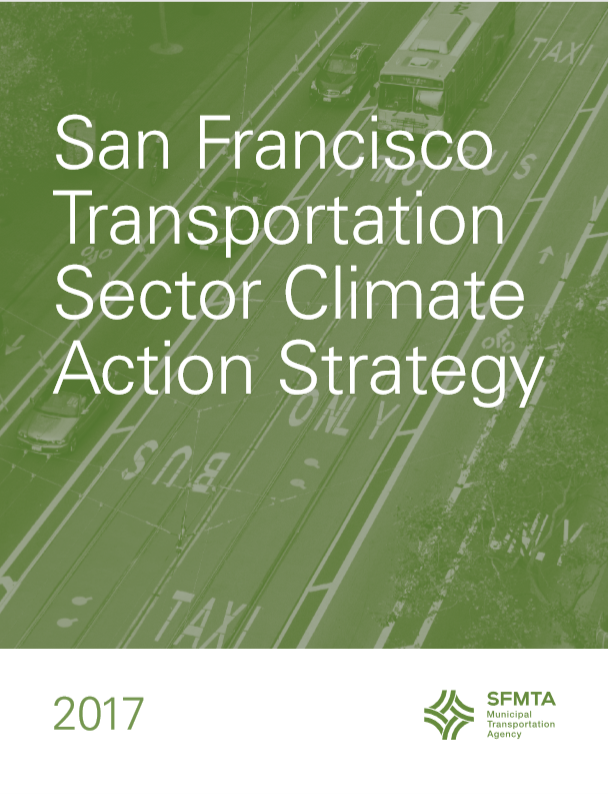San Francisco, CA

SF Transportation Sector Climate Strategy
Primary Goal: Shift 80 percent of all trips to environmentally sustainable modes by 2030.
Goals:
1. Create a safer transportation experience for everyone.
2. Make transit, walking, bicycling, taxi, ridesharing, and carsharing the preferred means of travel.
3. Improve the environment and quality of life in San Francisco.
4. Create a workplace that delivers outstanding service.
How?
In 2017 two Ordinance was passed:
- City Fleet Zero Emission Vehicle Ordinance (electrification of the City's light-duty passenger sedan fleet by 2022).
- Electric Vehicle Readiness Ordinance (requiring that all new residential, commercial, and municipal buildings have sufficient electrical infrastructure to charge vehicles in 20 percent of parking spaces simultaneously).
Strategy Direction:
- Municipal EV Charging Infrastructure Intake Form (collect project proposals from private-sector charging providers)
- Evaluate needs/site considerations
- MOU contract
- Permitting
- Outreach
- Construction
- Charging EV Hub
Transportation Demand Management Plan (to make it easier for everyone to use transit, bikes, etc. ) includes:
- Express commuter shuttles (paid per stop fee), complete streets, bike share
- Muni Forward (sync with traffic signals to give green light priority) - currently 30 lines which directly benefited 70% of all riders by increasing bus frequencies, longer AM hours, additional 40' buses, and Sunday service.
- City electric buses in public transportation
EV Charge Infrastructure (EV Hub):
- 749 level 2 charging stations
- 81 level 3 charging stations (DCFC)
- 204 free charging stations
with a variety of charging networks